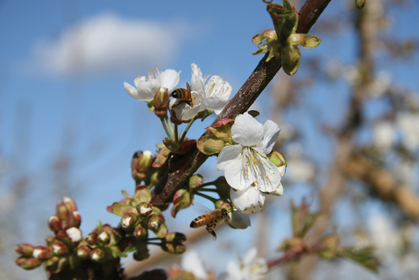Welcome to Blue Book!
Are you ready to join the thousands of companies who rely on Blue Book to drive smarter decisions? View our plans and get started today!
Still have questions? We’d love to show you what Blue Book can do for you. Drop us a line– we’ve been waiting for you.

The arrival of sweet cherries on retail shelves is a sure sign spring has arrived. Their relatively short season, delicate nature, and precise climate requirements make sweet cherries highly anticipated by consumers.
The Northwest sweet cherry industry began in the middle of the nineteenth century and is comprised of several states—Washington, Oregon, Idaho, Montana, and Utah—though the first dominates U.S. supply. Second in production is California, which grows a number of sweet varieties for the fresh market. Tart cherries, smaller and generally destined for the processing market, are also grown in Washington, Oregon, and Utah, though Michigan is the nation’s top producer (it is also ranked fourth in sweet cherry production).
According to the U.S. Department of Agriculture, the United States ranks fourth in world production of sweet cherries for fresh consumption at 198 metric tons in 2012-13, behind the European Union which produced 499 metric tons; Turkey with 285 tons; and China with 208 tons. Domestically, the Northwest produces 97 percent of the sweet cherries grown, with Washington at 235,000 tons in 2012 compared to 85,000 tons for California and 53,000 tons for Oregon.
Production Challenges
Besides the relatively short season for cherries and the delicate handling required, many in the industry cite the spotted wing drosophila (SWD) as a potential threat to successful crops. Jon Bailey, owner of Sovereign Fruit in The Dalles, OR says, “The biggest problem with SWD is that you don’t see the effect until the fruit is ripe, and by then damage is done.”
For growers battling SWD infestations, there can also be trade implications. “The European Union won’t accept fruit that has been sprayed with Danitol,” Bailey explains, “which is the most effective chemical. However, you have to take care of your crop first, then worry about where you will sell it later.”
Growers in other regions were able to use nature itself to prevent pest and disease problems. Dan Wohlford, marketing director for Oneonta Trading Corporation in Wenatchee, WA says, “Pests are always a concern, but our spraying has actually dropped. We interrupt pest mating cycles by hanging pheromone strips in orchards. Because they reproduce less, chemical sprays are used rarely and sometimes not at all.”
For many producers, the availability of workers is a major factor affecting harvest. Though the federal H2A temporary labor certification program is available, many growers find the process and its paperwork cumbersome, and still have difficulty getting enough workers at the right time. If the season goes as it should, California harvest begins in late April.








